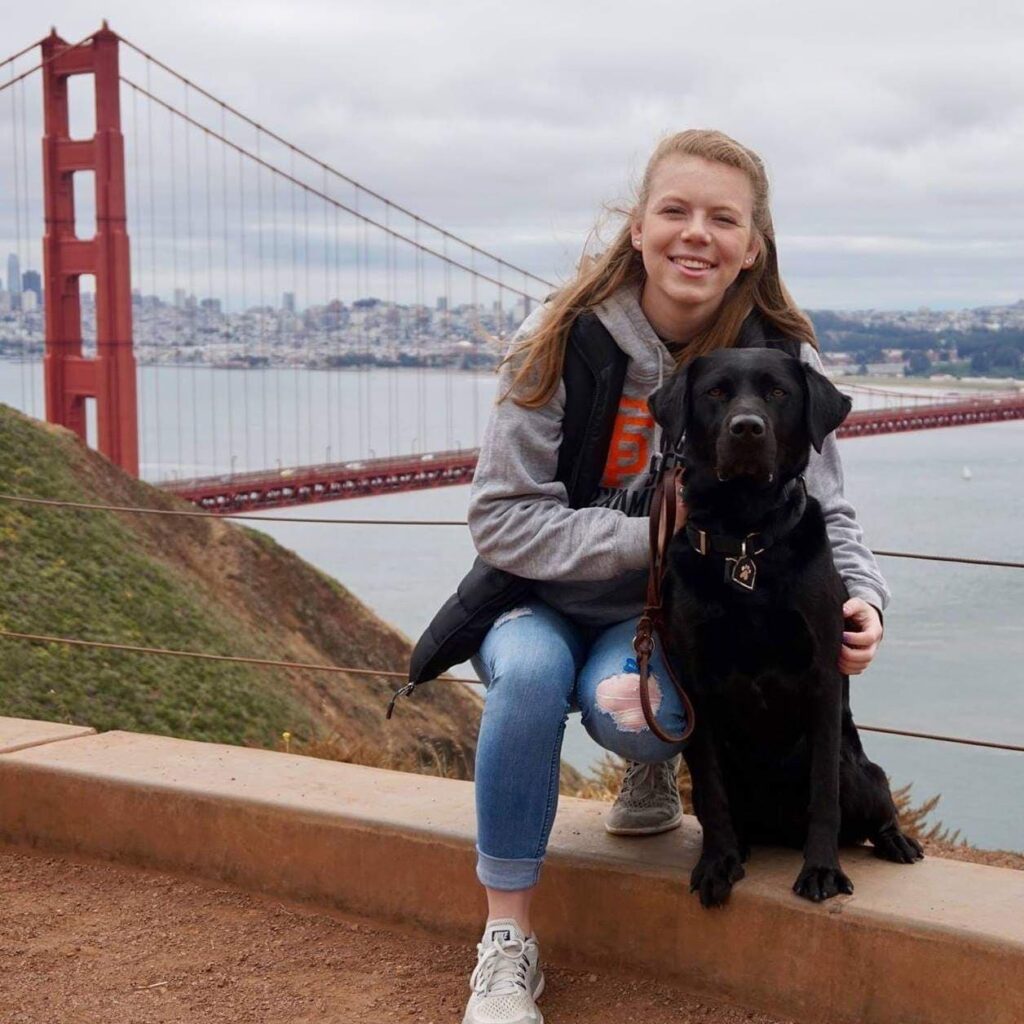Post Contributed by Ali Hance and DeeDe Baker
I grew up in a small town and, at that time, the only dog I saw that was a service dog was a guide dog for a blind person. Until recently, if a dog wore a service dog vest, it was assumed the animal had been properly trained. We knew enough to leave the dog and the handler alone. That has changed. It is a new world. One with an inordinately high number of individuals who are confusing emotional support and companionship with service.
As a trainer for Dog Tag Buddies, I not only help my veterans teach their dogs how to be well-trained service dogs. Additionally, I must diligently teach them to watch other dogs when they are out in public. The incidents of misrepresented dogs attacking service dogs increases daily. This is one of the many reasons we are seeking to update Montana’s service dog law, to ensure it more closely aligns with the Americans with Disabilities Act. Small changes can reap large rewards.
Ali Hance, a senior studying in the Anthrozoology Program at Carroll College, is one of the trainers for Major, our service dog in training. She provides her first-hand experience as a puppy raiser for Guide Dogs for the Blind and as a handler who utilizes a trained service dog.
Fake service dogs are a rising issue for service dog handlers in the US. People put vests on their dogs and call them a service dog. In fact, some people spend hundreds of dollars to “register” their dog as a service dog. However, under the ADA, there is no registration or certification for a service dog. What makes a dog a service dog is the tasks and training a dog goes through to help mitigate a person’s disability.
You might be wondering, why people are faking service dogs? It’s a simple answer. People just want their dog to go everywhere with them. So, they take an untrained animal into public and put people and legitimate service dog teams in danger. Most of these dogs are extremely stressed, as they have not gone through public access training. A stressed dog may attack both people and other dogs. However, service dogs train for years to become comfortable in any environment. This training is important, as a service dog accompanies their handler in all places.

Not only do fake service pose a threat for real teams, they also negatively depict service dogs in general. Service dogs train to walk on a loose leash, never jump or lunge at people, bark inappropriately, and to remain “invisible”. Fake service dogs do the opposite ( it is very easy to see the difference between the two) and they create a bad reputation for real teams. Businesses that experienced a bad encounter with a fake service dog denied me access. The reputation fake service dogs are creating is detrimental to real service dog teams.
I tire of worrying about my dog being attacked while she does her job. I hope lawmakers stand up and create new laws to protect service dog teams. So, please do not bring your dog into a non-pet friendly stores claiming it is a service dog!
You can follow Dog Tag Buddies @ https://www.facebook.com/Dogtagbuddies/
And Major, SDIT @ https://www.facebook.com/MajorSDiT/





